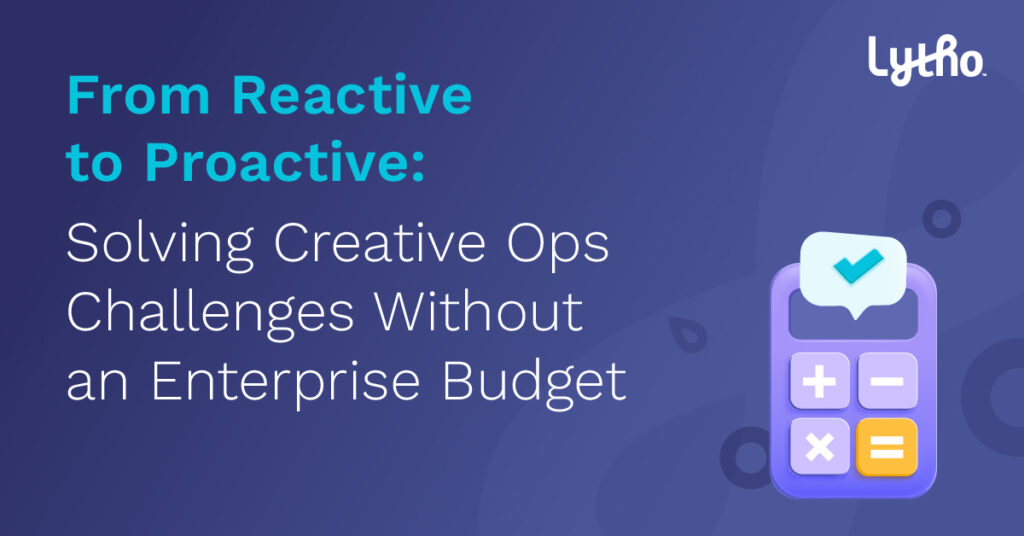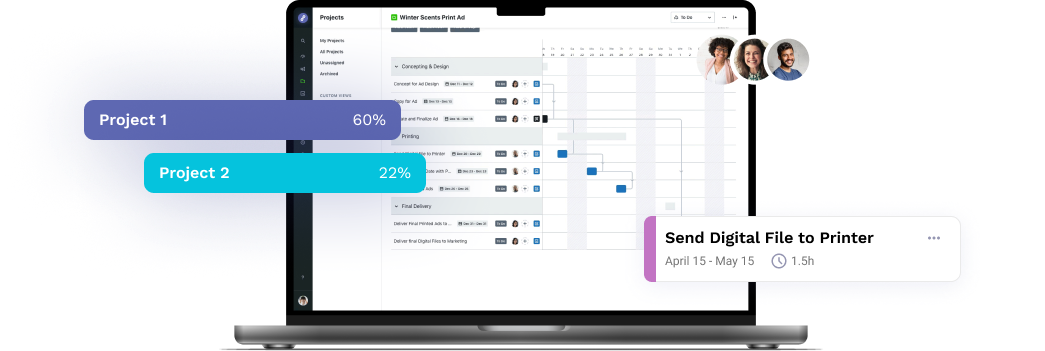
Creative teams are under immense pressure to deliver more content across more channels, while maintaining brand consistency and meeting tight deadlines. The key to navigating this complexity lies in a well-structured creative operations tech stack.
Why Creative Ops Matters
Creative ops encompasses the systems, processes, and tools that streamline creative workflows, improve collaboration, and ensure brand integrity. These solutions provide structure and automations that deliver:
- Accelerated speed to market: Deliver campaigns faster by reducing bottlenecks.
- Ensured brand consistency: Maintain a unified brand voice across all assets.
- Scaled efficiently: Increase output without proportionally increasing resources.
- Enhanced collaboration: Improve cross-functional teamwork and communication.
- Reduced risk: Implement audit trails and compliance guardrails.
Essential Components of the Ideal Creative Ops Tech Stack
When evaluating software for your toolkit, consider the following core components:
Creative Workflow Management
A purpose-built workflow tool is the backbone of any creative team. Look for solutions that:
- Centralize project intake: Streamline requests and approvals in one place.
- Offer real-time tracking: Monitor project progress and deadlines.
- Facilitate resource allocation: Assign tasks based on measurable team capacity.
- Report insights: Understand operational trends to make data-backed decisions.
When shopping vendors, ensure the solution includes customizable, templated workflows that align with your team’s unique processes and is capable of measuring your unique KPIs.
Review & Approval Tools
Efficient review processes are critical to maintaining momentum. Seek tools that:
- Enable real-time feedback: Allow stakeholders to comment directly on assets.
- Track revisions: Maintain a clear history of changes and allow for comparison on prior versions.
- Automate notifications: Keep projects moving with timely alerts.
Ensure the solution includes customizable approval workflows to match your team’s needs.
Digital Asset Management (DAM)
A DAM system serves as the single source of truth for all your creative assets. Key features to consider:
- Metadata tagging: Easily search for and retrieve assets; correlate asset performance through publishing channels.
- Compliance Guardrails: Enforces brand and regulatory guidelines.
- Access controls: Manage permissions for different users.
Be sure the solution includes integration capabilities with your existing tools to ensure seamless asset management.
Integrated Creative Automation
Automation tools help scale content creation without overburdening your team. Features to look for:
- Template-based design: Quickly produce on-brand assets.
- Bulk editing capabilities: Make changes across multiple assets simultaneously.
- Integration with data sources: Personalize content at scale without sacrificing quality or compliance.
When evaluating options, ensure the solution includes user-friendly interfaces that empower non-designers to create content.
Building Your Creative Ops Stack
- Assess Your Current Processes: Identify friction in your content/creative supply chain and areas for improvement to accelerate speed to market.
- Define Your Goals: Determine what you want to achieve, ensuring you identify the right resources to assist in the build-out.
- Build a Rubric: Create a standard evaluation form to use for each vendor, so you have a common framework for comparison.
- Research Vendors: Look for tools that align with your objectives and offer scalability. Consider third-party sites like G2, where customers leave reviews for companies like Lytho.
- Request Demos: Test drive solutions to ensure they meet your team’s needs.
- Ask for References: Ask to speak to vendors’ current customers to learn what works and what doesn’t. There’s no better source of truth than those currently using the software you’re about to invest in.
- Gather Feedback: Involve stakeholders in the evaluation process.
- Implement Gradually: Roll out new tools in phases to ensure smooth adoption.
Two Tips for Choosing the Right Vendor
First, look for a vendor that offers all four core capabilities — even if you only need one or two today. It’s easier to expand with a single solution than restart the buying process later and add yet another vendor to manage. Second, ask vendors about their change management support. Onboarding new tools takes effort, so find out what resources they provide, how they support adoption, and what post-launch success looks like.
Final Thoughts
Investing in the right creative ops solutions is not just about keeping up with the pace of content creation; it’s about setting your team up for sustainable success. By thoughtfully selecting and implementing tools that enhance workflow, asset management, collaboration, and automation, you position your team to deliver high-quality creative work efficiently and effectively.
Ready to take your creative operations to the next level? Schedule a demo with Lytho today and transform your creative process!
Watch Lytho Product Marketing Manager Sarah Griffin talk about the importance of your purpose-built tech stack in her on-demand webinar From Reactive to Proactive: Solving Creative Ops Challenges Without an Enterprise Budget.
Do you want to give yourself and your creative team more room for creative stimulation by automating the boring stuff? Lytho helps you streamline your entire workflow and harmonize all brand collateral under a single, uniform platform. Feel free to reach out to us by scheduling a demo and learning how our creative solutions can boost the effectiveness of your creative projects. We look forward to speaking with you!

Ready to simplify your creative operations and start having a little fun at work again? Schedule time to talk with us.
Let us show you how Lytho’s Creative Operations Platform helps in-house creative and marketing teams do better work, ease the stakeholder experience, and stay on brand.
Schedule a Demo